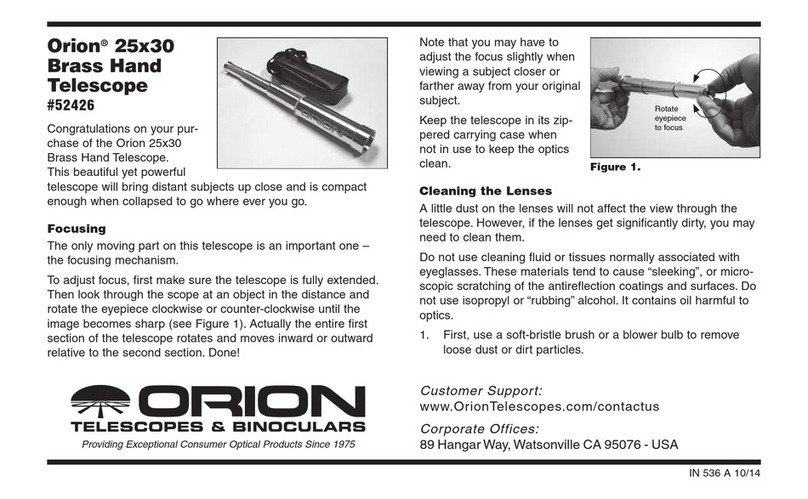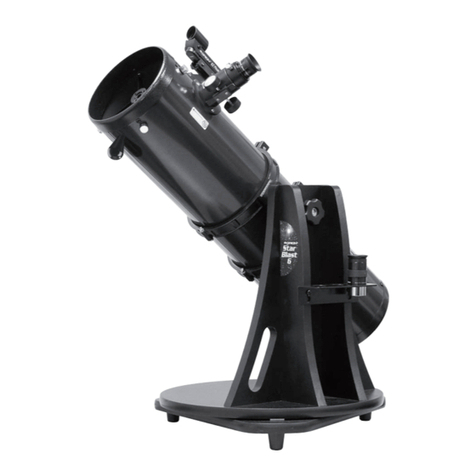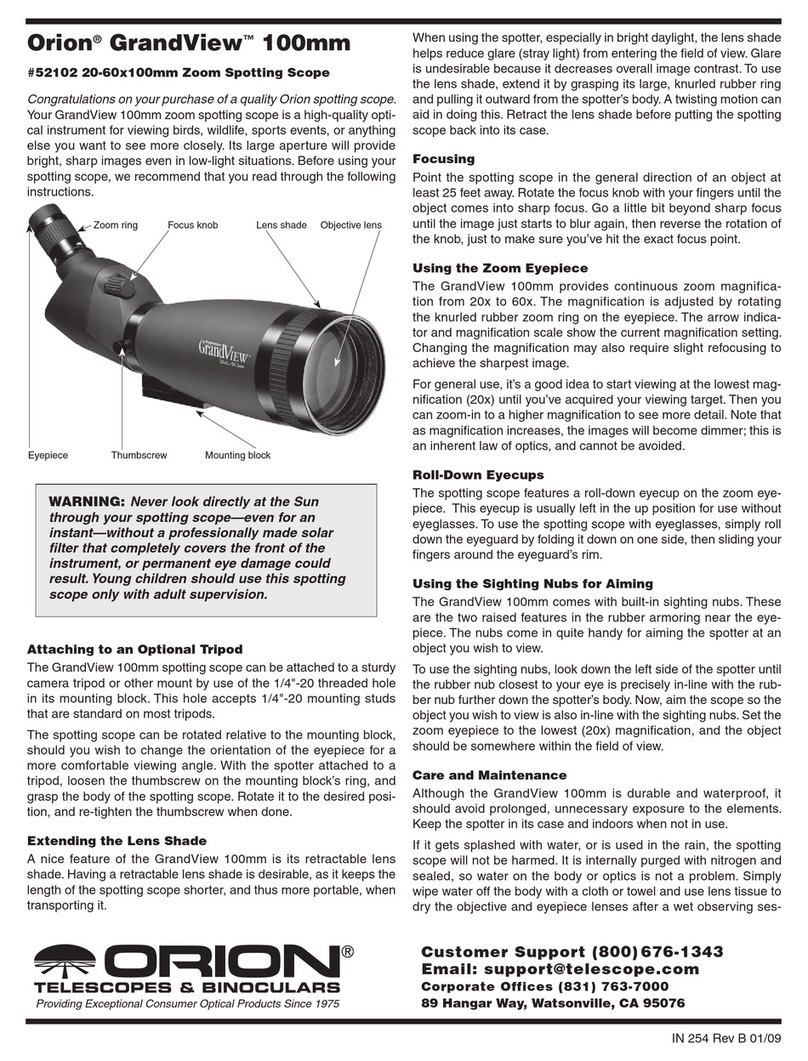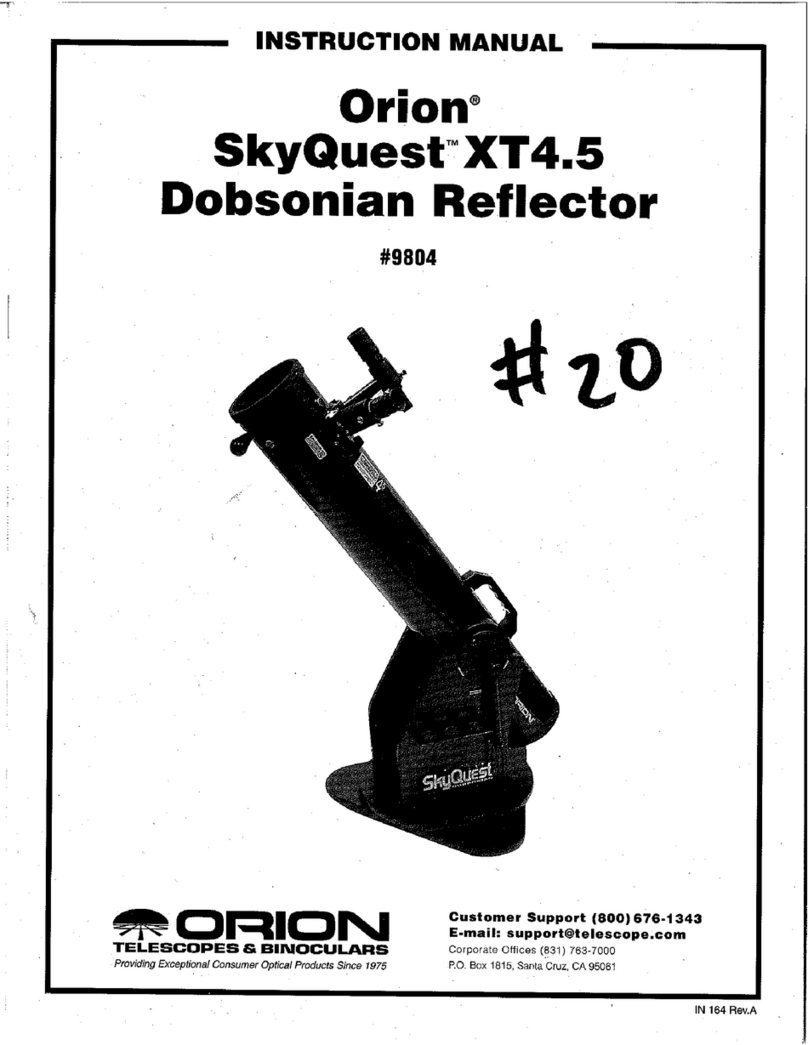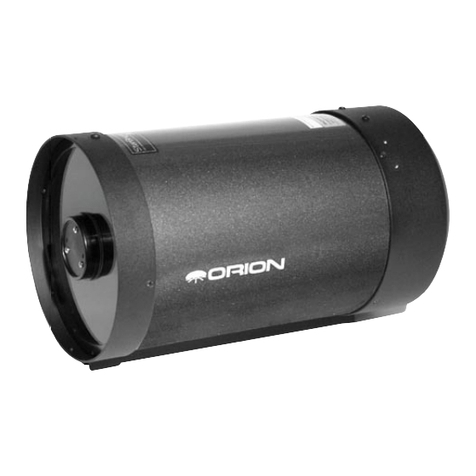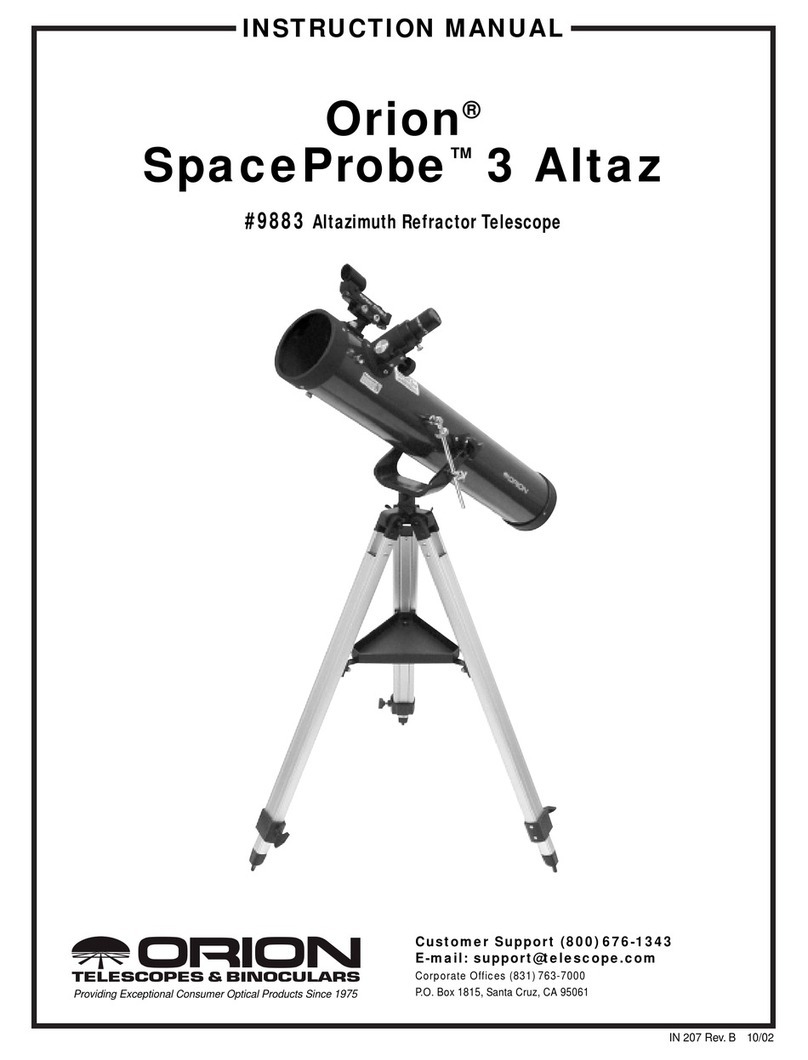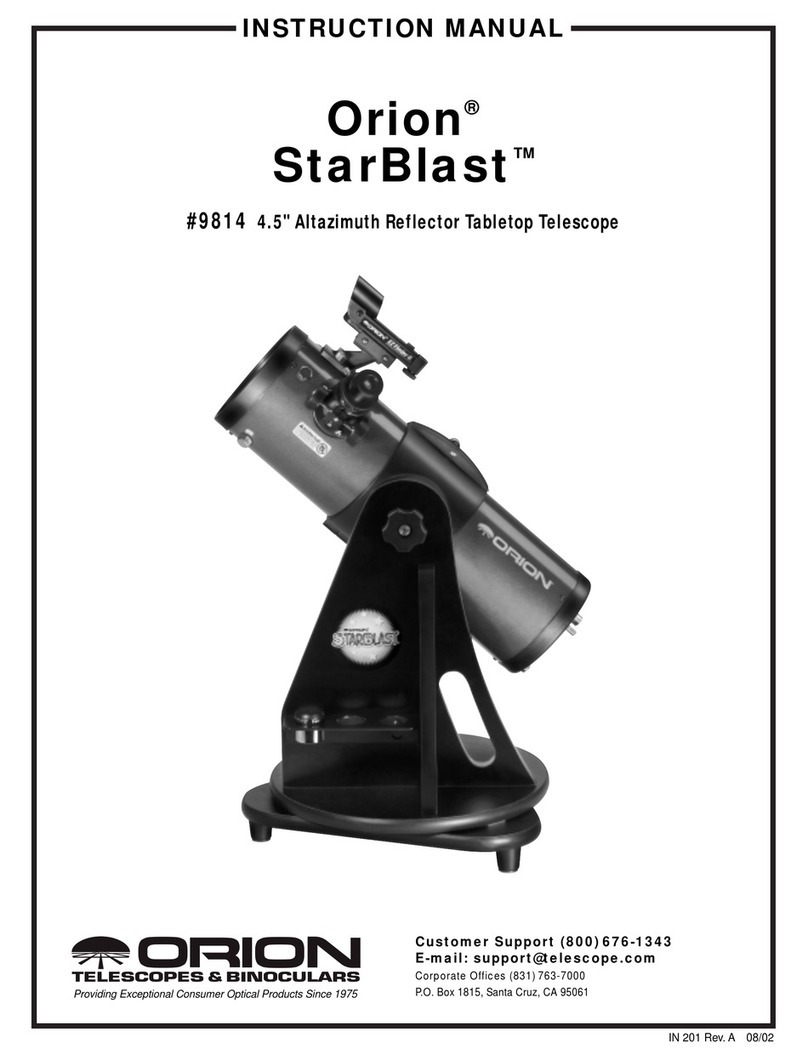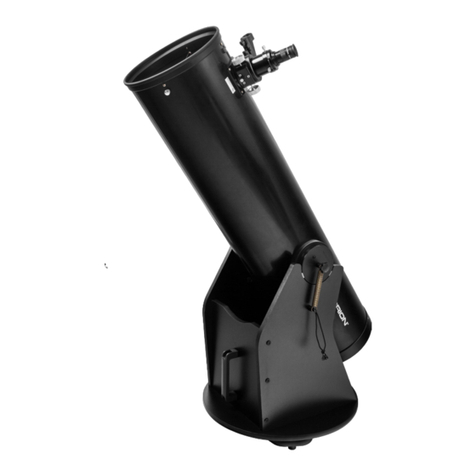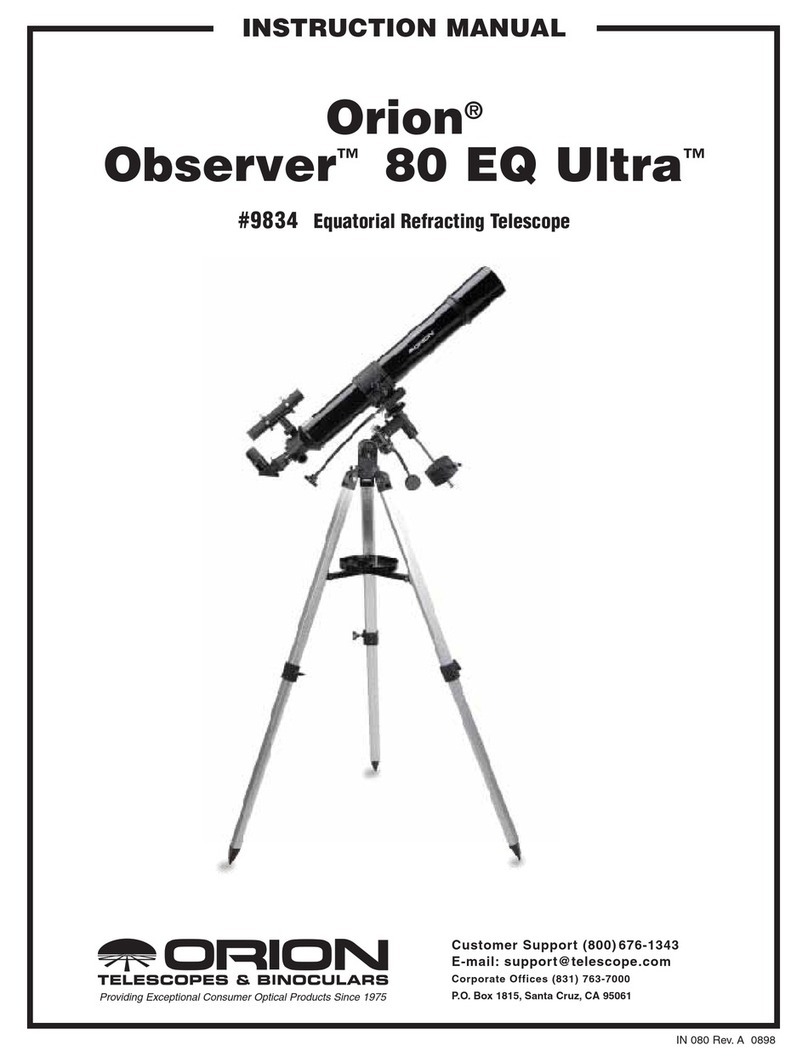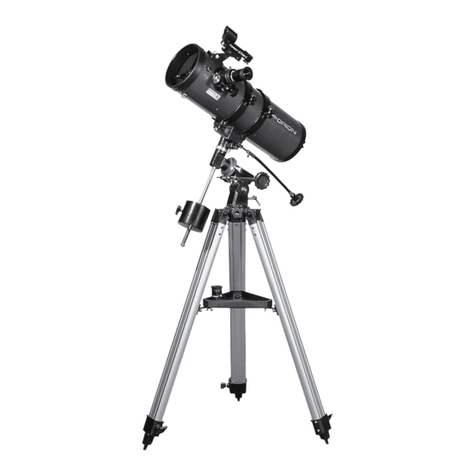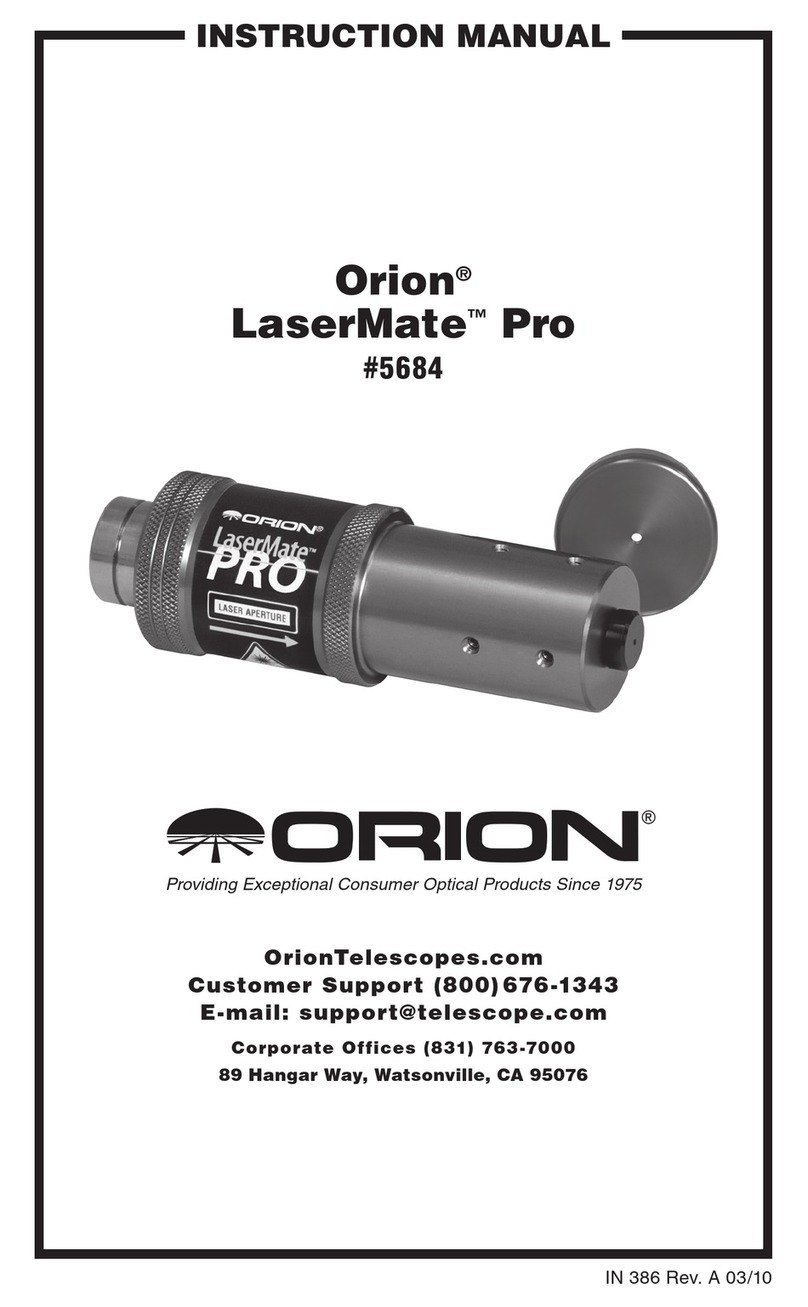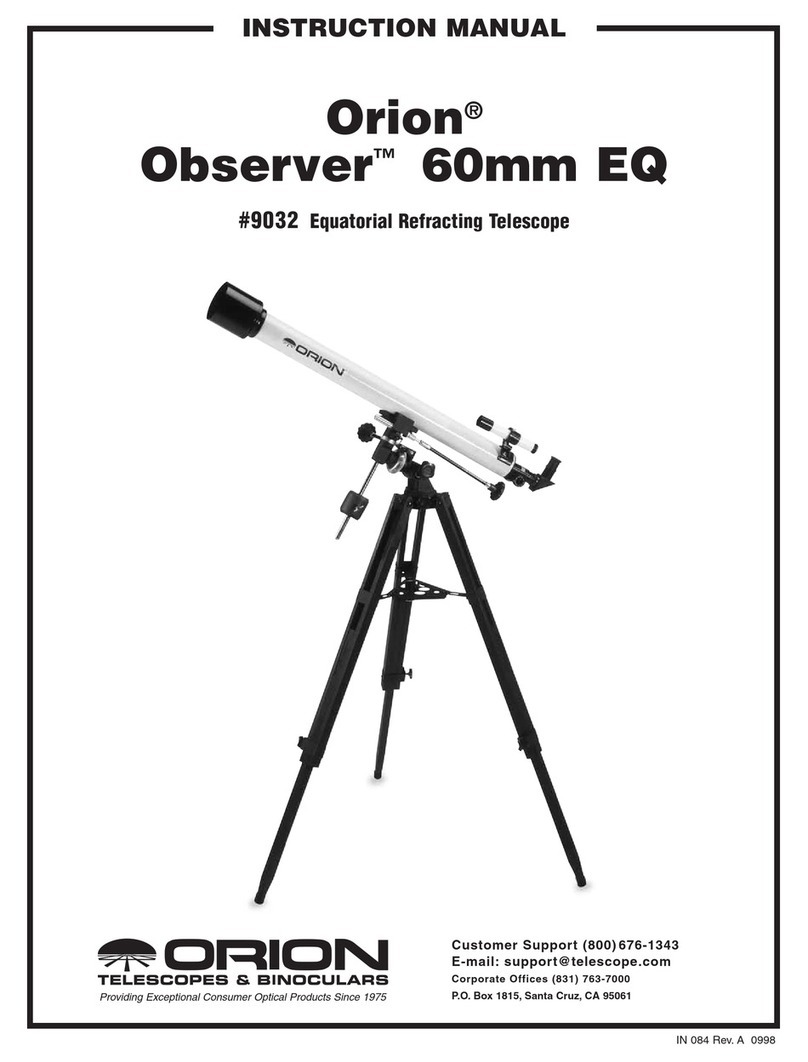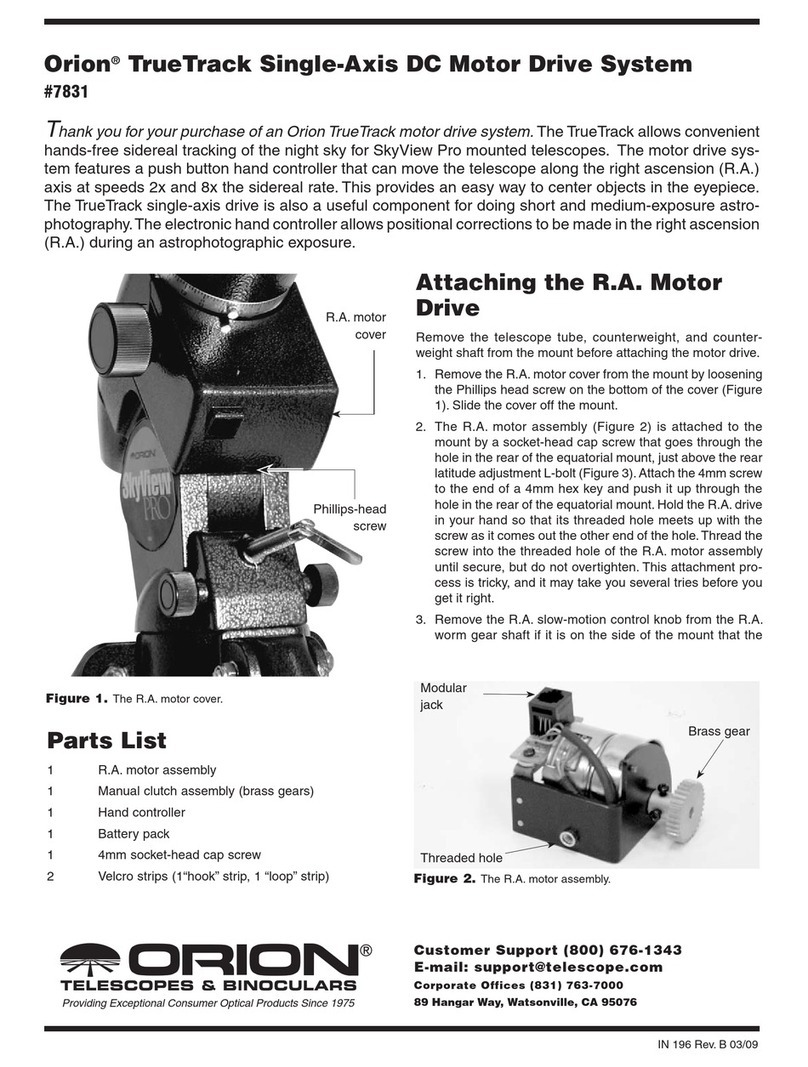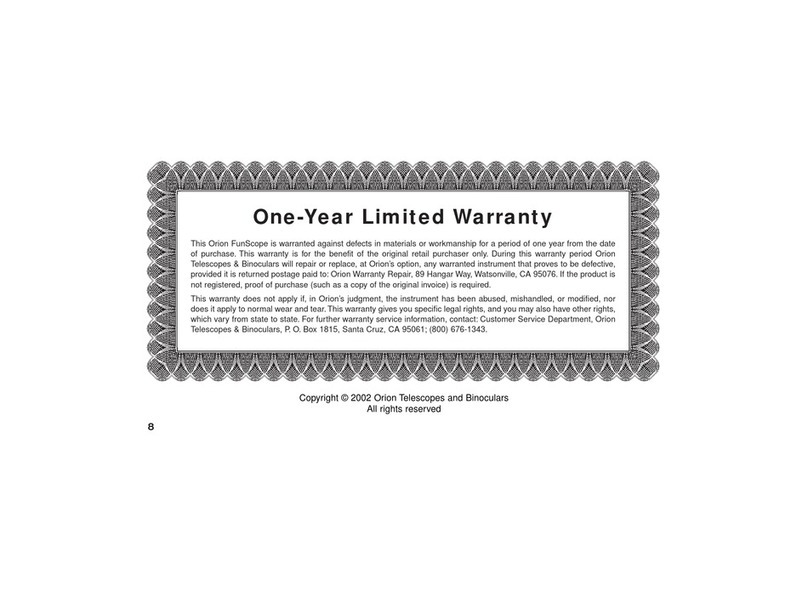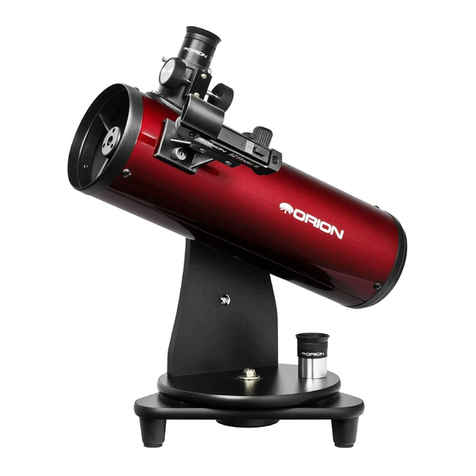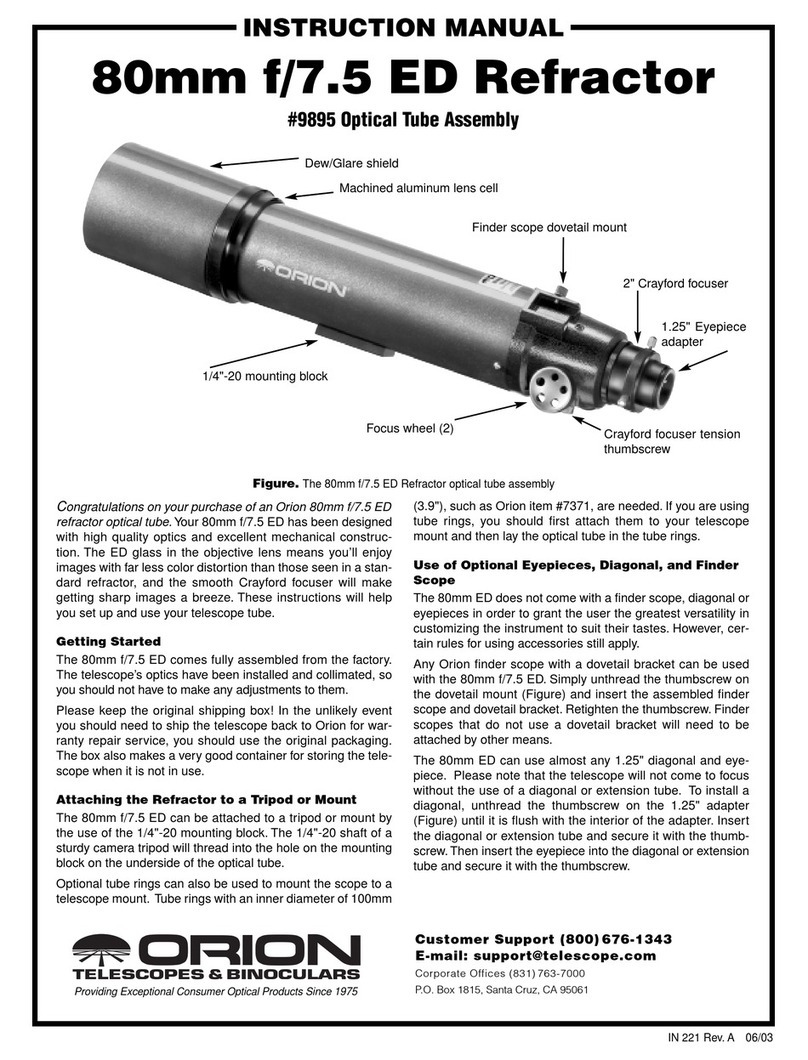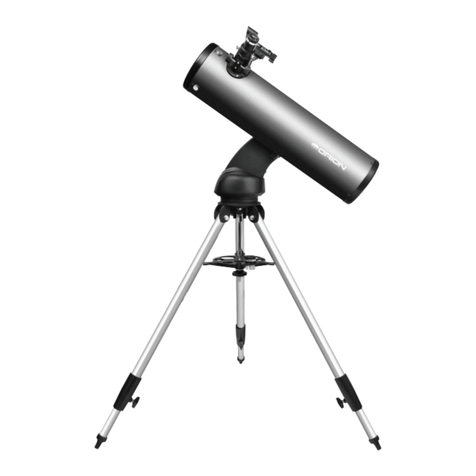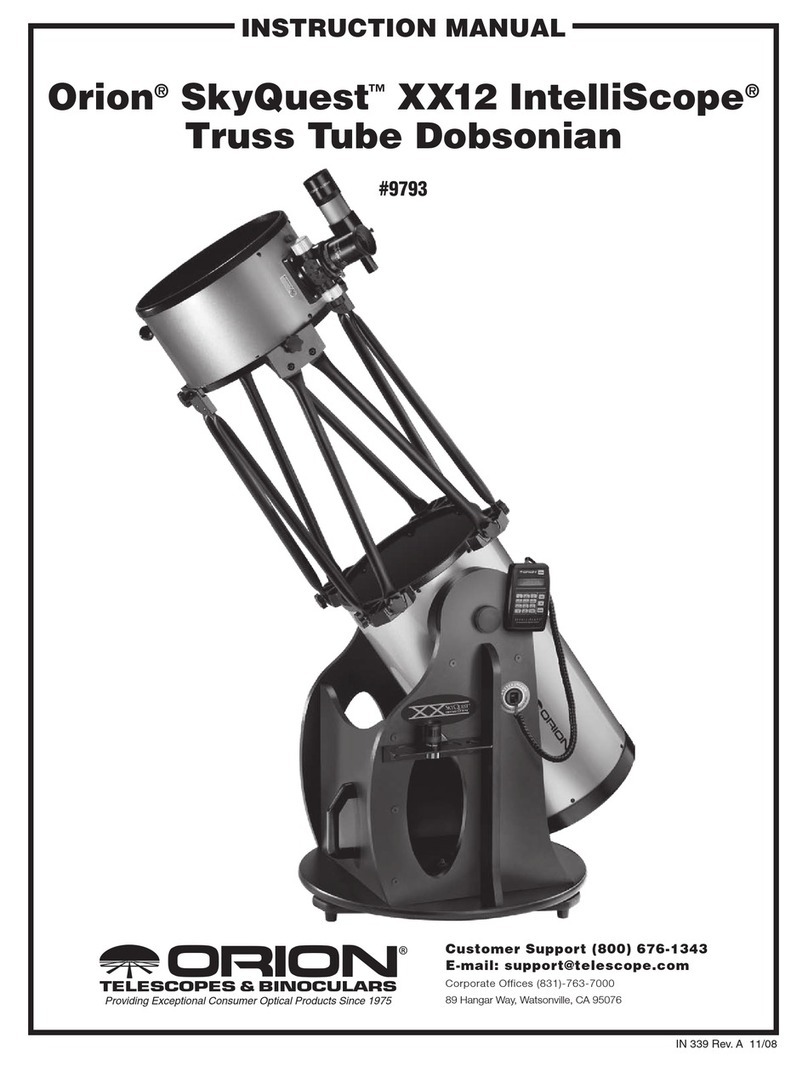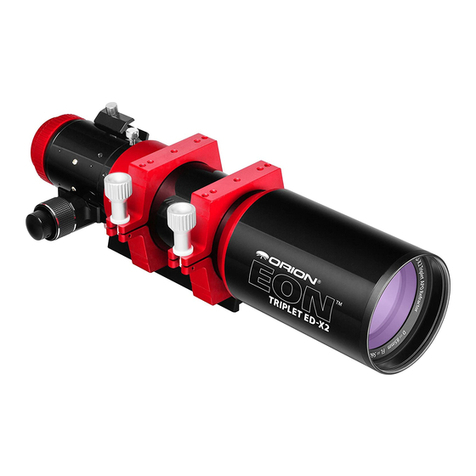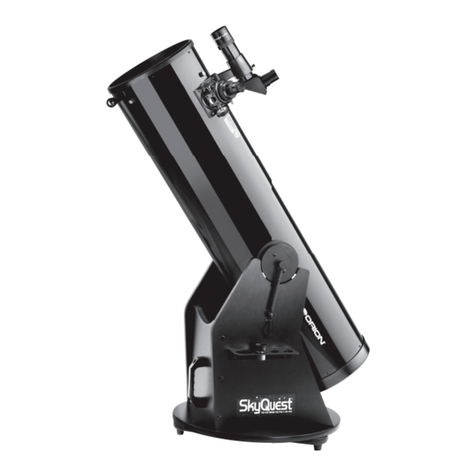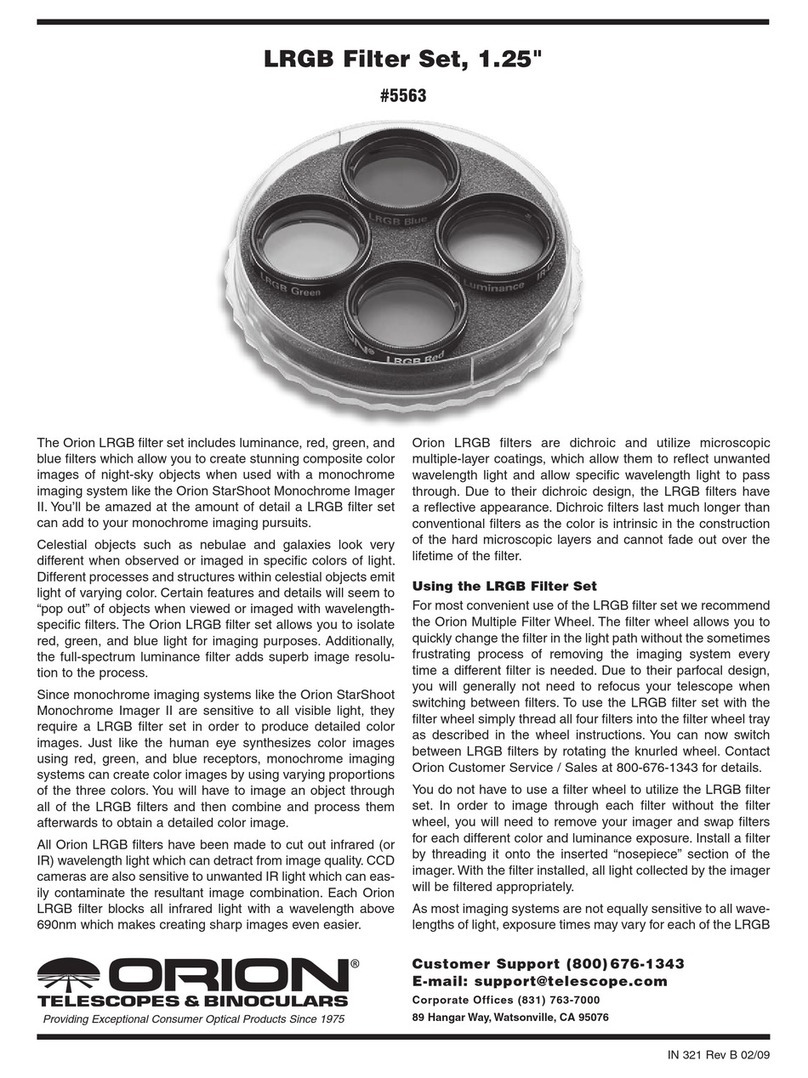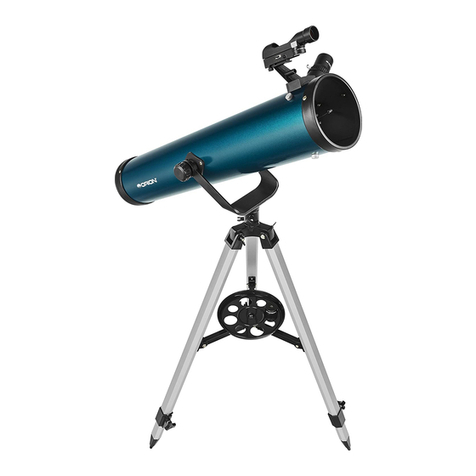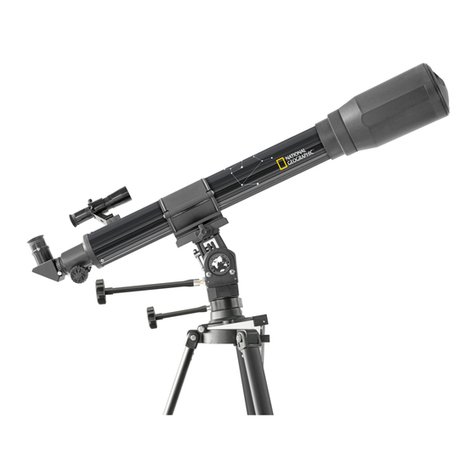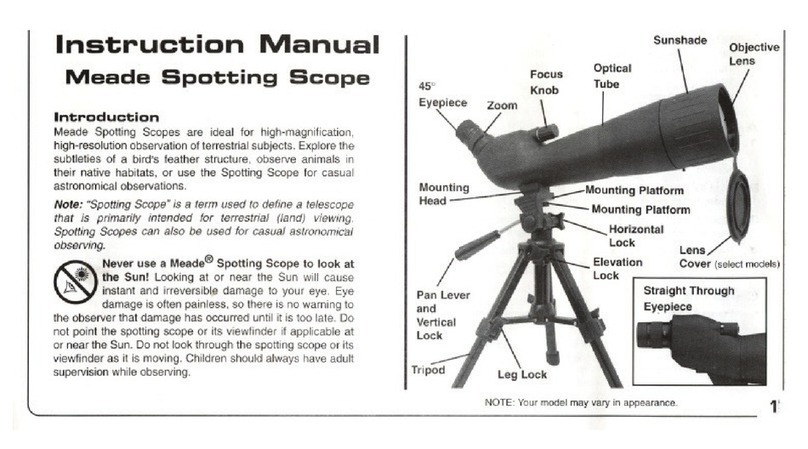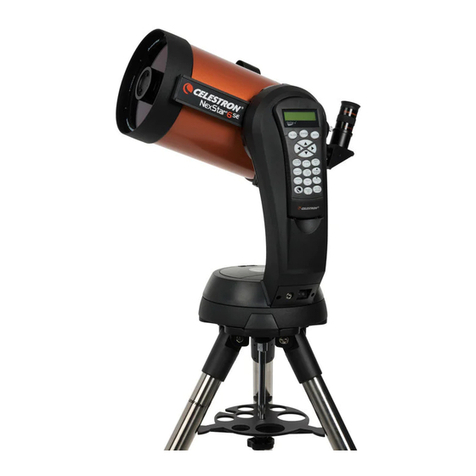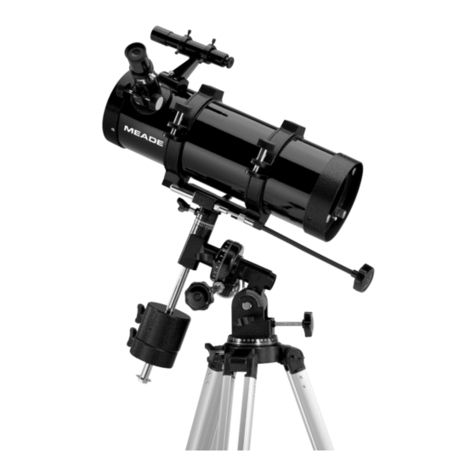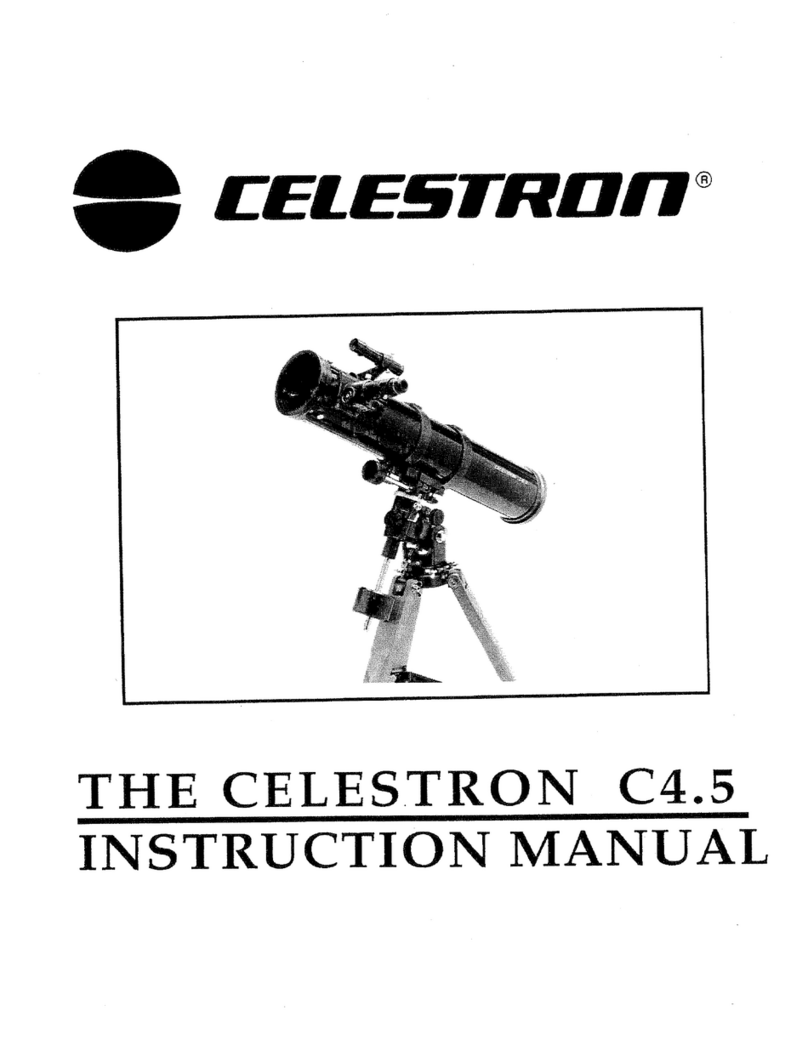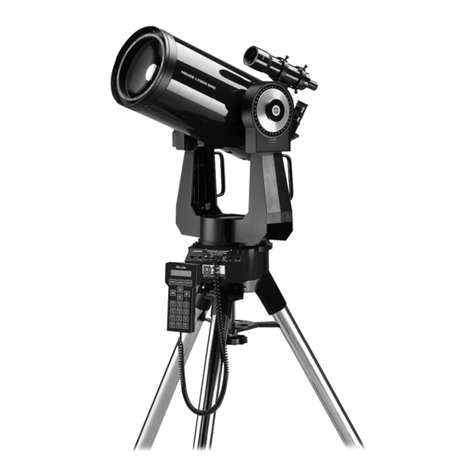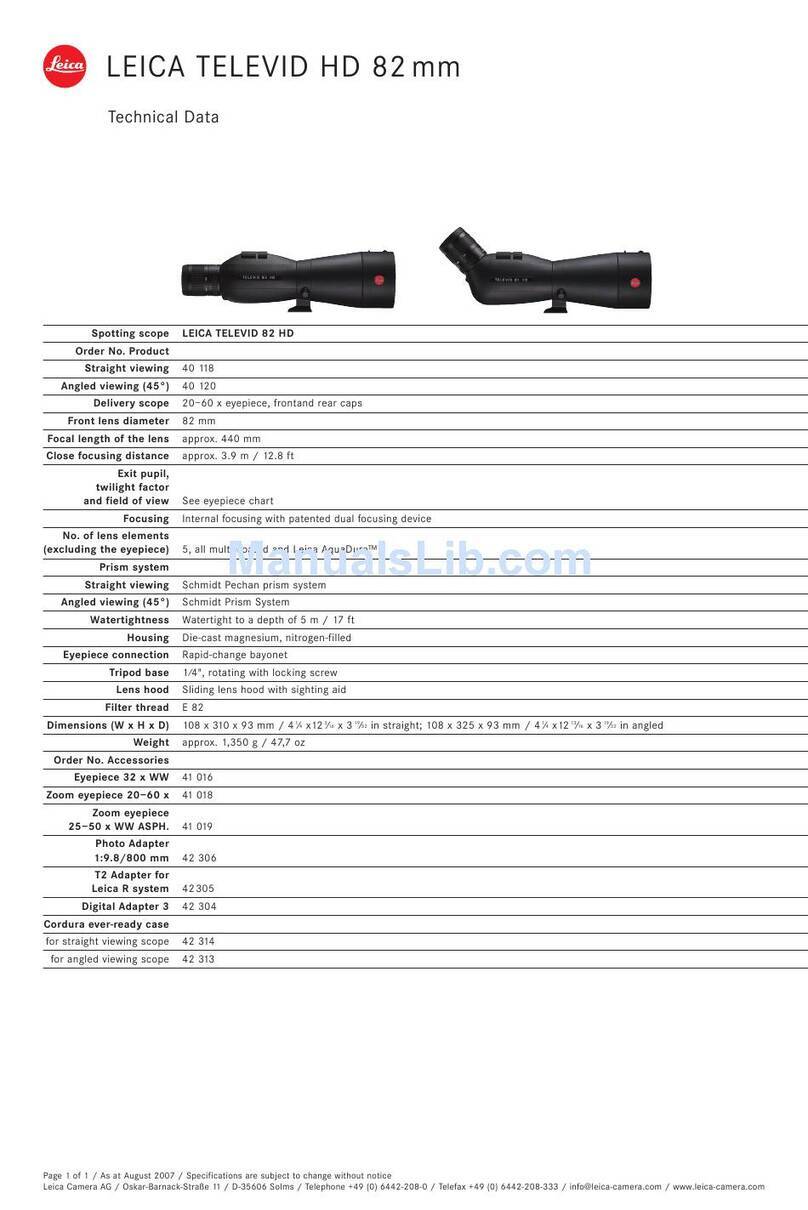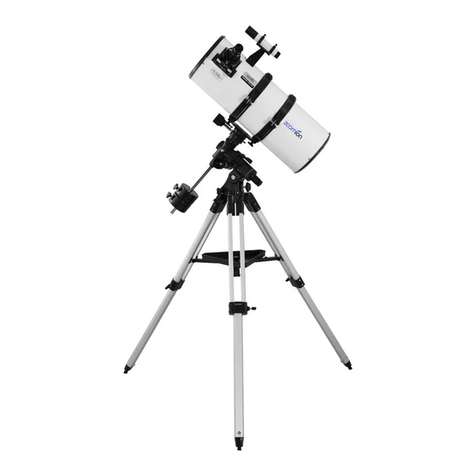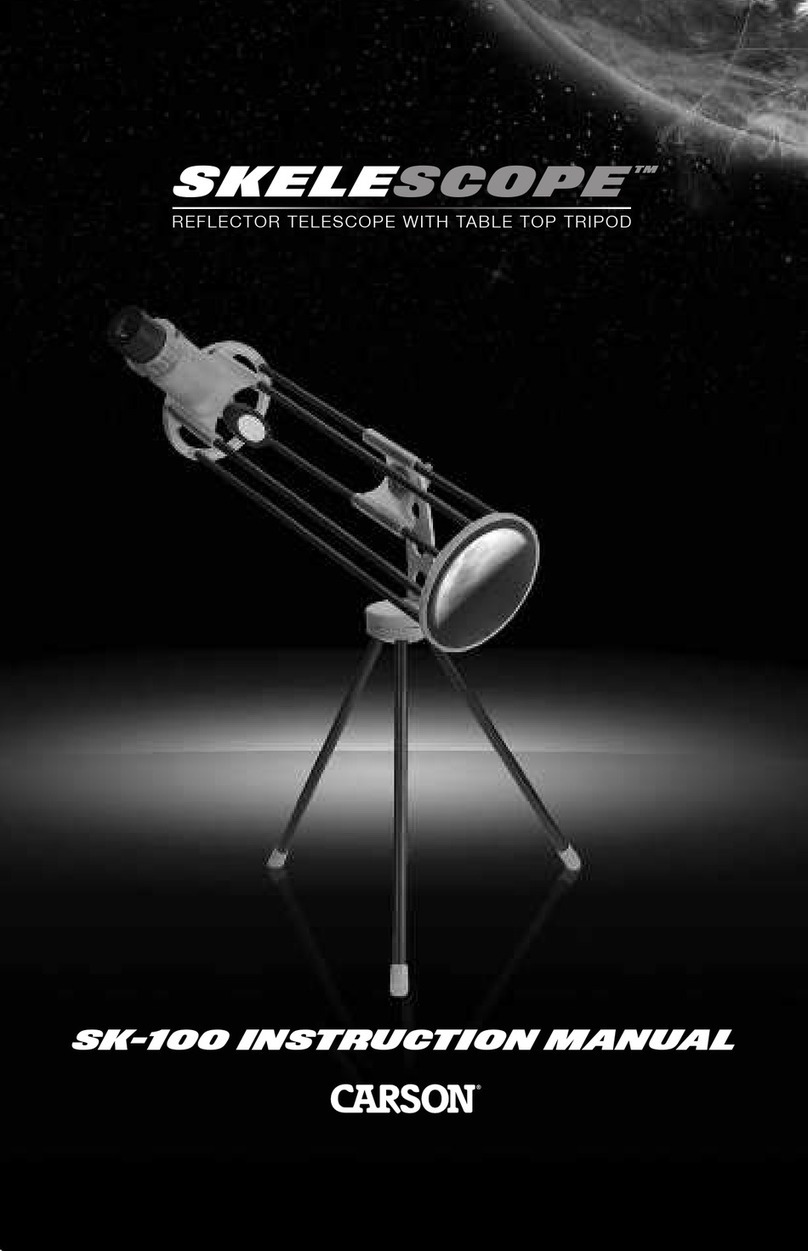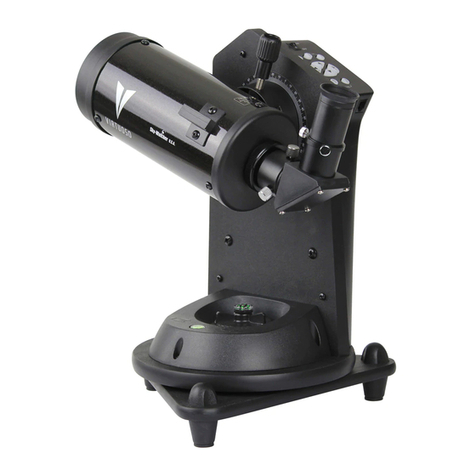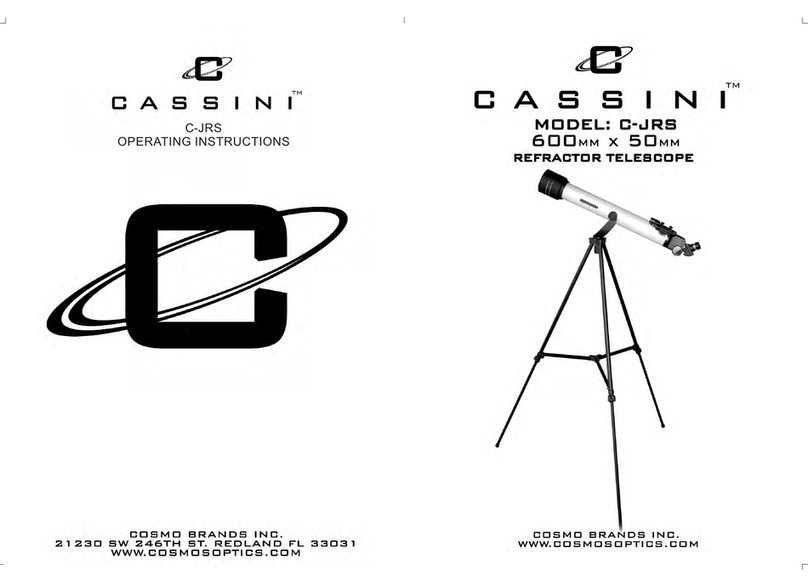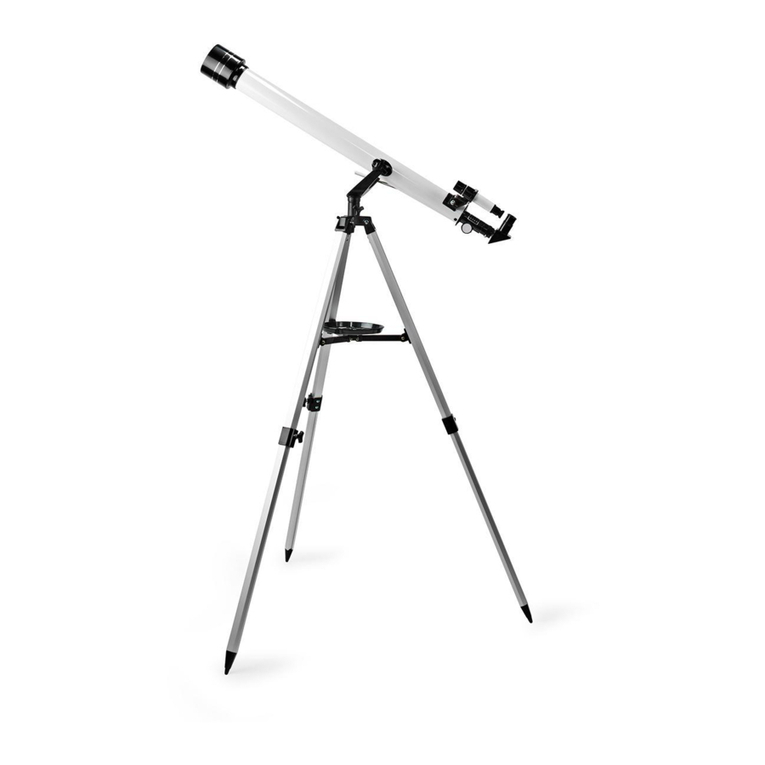
2
Extending the Lens Shades
Another nice feature of the BT100 is its extendable lens shades
(Figure 1). These increase image contrast by preventing glare
(unwanted stray light) from entering the objective lenses of the bin-
oculars. They also slow the formation of dew on the objective lens
exteriors.
To use the lens shades, grasp them with your ngers, and pull them
outwards. You will need to retract the lens shades to t the binocu-
lars into its box.
Adjusting the Distance Between Your Eyes
(Interoccular Distance)
Adjusting the interoccular distance of the BT100 is incredibly easy.
Simply grasp the base sections below each eyepiece focuser hous-
ing (Figure 1) and rotate inwards or outwards with your thumbs.
The two housings are connected internally, so they rotate with
each other, always insuring the eyepieces stay level and aligned.
Pivot the bases while looking through the BT-100 until the distance
between the eyepieces matches the distance between your eyes.
When properly adjusted, you should see a single, round eld of
view when looking through the binoculars. Make this adjustment
before you attempt to focus the binoculars.
Focusing
The BT100 binoculars utilize individual focus eyepieces. This
makes the binoculars mechanically more rugged than similar cen-
ter-focus models, and generally maintains optical alignment better.
For astronomical observation, individual focus eyepieces are usu-
ally preferred.
Pick an object in the distance to view. At night, best focus will be
achieved by focusing on a medium bright star. Cover your right eye
(or cover the right objective lens of the binocular) and focus the left
eyepiece by rotating the rubber grip ring on the eyepiece holder
until the image appears sharp. Then cover your left eye (or cover
the left objective lens of the binocular) and focus the right eyepiece
by rotating the eyepiece holder until the image appears sharp. The
binoculars are now focused. If you want to view an object at a dif-
ferent distance, re-focusing of both eyepieces is required. Also,
changing eyepieces may require refocusing.
For astronomical observation, all objects will always appear focused
at the innity focus point. This means you only need to focus the
binoculars once per observing session per set of eyepieces. Since
everyone’s eyes focus images slightly differently, different observ-
ers will need to refocus the binoculars for their own vision.
Waterproof Binoculars
The BT100 is sealed to be waterproof. While it is impervious to
rain, wind, splashing, and humidity, do not immerse the binocular in
water under any circumstances. If the binocular becomes wet with
fresh water, merely blot it dry with a clean cloth and clean the lens
surfaces as outlined below. Saltwater should be rinsed off com-
pletely and the binocular then blotted dry and its lenses cleaned
as outlined below. If the binocular body becomes dirty, it can be
cleaned with warm water and a clean cloth. If extremely dirty, or
oily, clean the body with a dilute solution of warm water and mild
soap on a cloth, then rinse with clean water and blot dry. Do not
clean lens surfaces with soap and water! The BT100 is also not
meant to be left outside on a permanent basis, even though it is
waterproof. Exposure to the elements (especially UV sunlight, and
poor weather) will degrade the unit over time. Please bring the
BT-100 inside when you are nished with your observing session.
Cleaning and Care of Binocular Lenses
The lens surfaces of Orion binoculars are coated with anti-reec-
tion multi-coatings that can be damaged with careless handling.
Avoid touching lens surfaces with ngers or any coarse material.
All optics, even if stored, should be cleaned at least once a year
or whenever they are dirty. The dust that builds up on coatings
promotes mold growth, which etches glass and destroys coatings.
Avoid over-cleaning; it can also damage the coatings. Always use
lens cleaning tissue and uid that are specically designed for mul-
ticoated lenses. Do not use uids or tissues that are for eyeglasses
or household use. Never attempt to disassemble the binocular or
eyepieces in order to clean them; this can also void the warranty.
To clean the binocular (and eyepiece) lenses, rst blow off the
lens with a blower bulb or gently wipe the lens with a lens cleaning
brush to remove the larger particles. Put a few drops of lens clean-
ing uid on a fresh piece of lens cleaning tissue (never on the lens)
and gently wipe the lens. Quickly wipe the excess uid with a new,
dry piece of lens cleaning tissue. For larger lenses, clean only a
small area at a time, using a new tissue each time. On excessively
dirty lenses, wipe across the lens using one stroke for each tissue,
alternating wet and dry.Always avoid excessive pressure or rubbing
when wiping, as wiping too hard can scratch the lens.
Storage and Transport
The BT100 binoculars come with a foam lined transport box for
safe storage and transport. We recommend always keeping the
binoculars in this box with the cover caps on when not in use.
Avoid unnecessary shocks to the binocular, whether it is in its box
or not. Although the BT100 is designed to be mechanically rugged,
excessive impacts may cause the optics to become misaligned.
This is not covered by the warranty.
Allow the optics to slowly adjust to cold weather by storing the
instrument in a cold area, such as an unheated garage or the trunk
of a car, for a few hours before use. When bringing the instrument
back inside a warm house, let everything dry out before placing the
caps on the objectives or storing it in the box. If there is moisture
on the objective lenses when the caps are attached, the moisture
will not evaporate, and can end up etching the coatings over a long
period of time. The binoculars should be stored in a cool, dry place
to prevent mold growth, which can damage the optics. This is also
not covered by the warranty.
Specifications
Objective lenses: 100mm clear aperture, air-spaced
achromatic doublets
Magnication: 18mm Ultra Flat Field eyepieces
included (31x), uses standard 1.25"
eyepieces
Focusing: Individual focus eyepieces
Field of view: 2.1° with the included eyepieces
Prisms: BAK-4, porro, provide 45° viewing
angle
Anti-reection coatings: Fully multi-coated
Body design: All metal construction, waterproof
Interior: Glare threaded, baffled, and
blackened
Lens shades: Retractable
Weight: 14.5 lbs.
Mounting provisio: ¼"-20 mounting plate
Carry handle: Included, metal
Dust covers: Thread on covers for objective lenses,
rubber caps for eyepieces and
eyepiece holders
